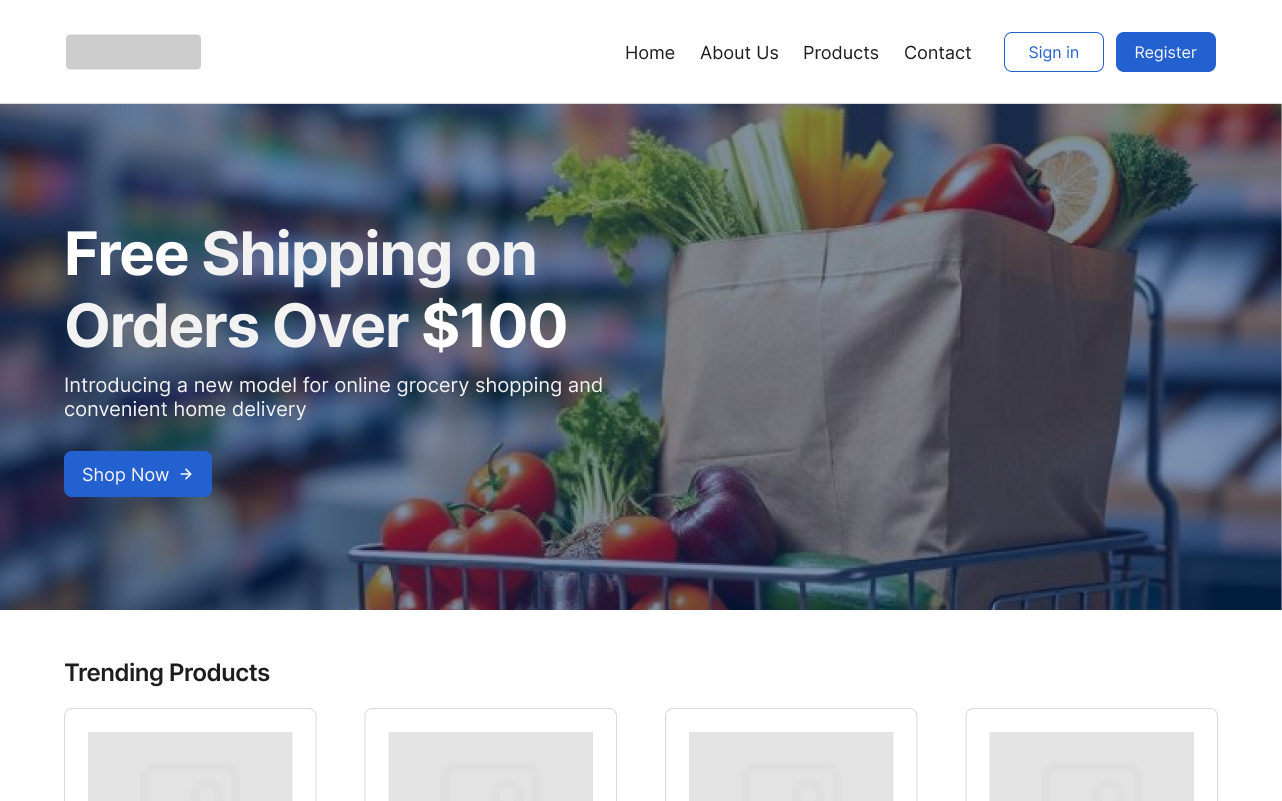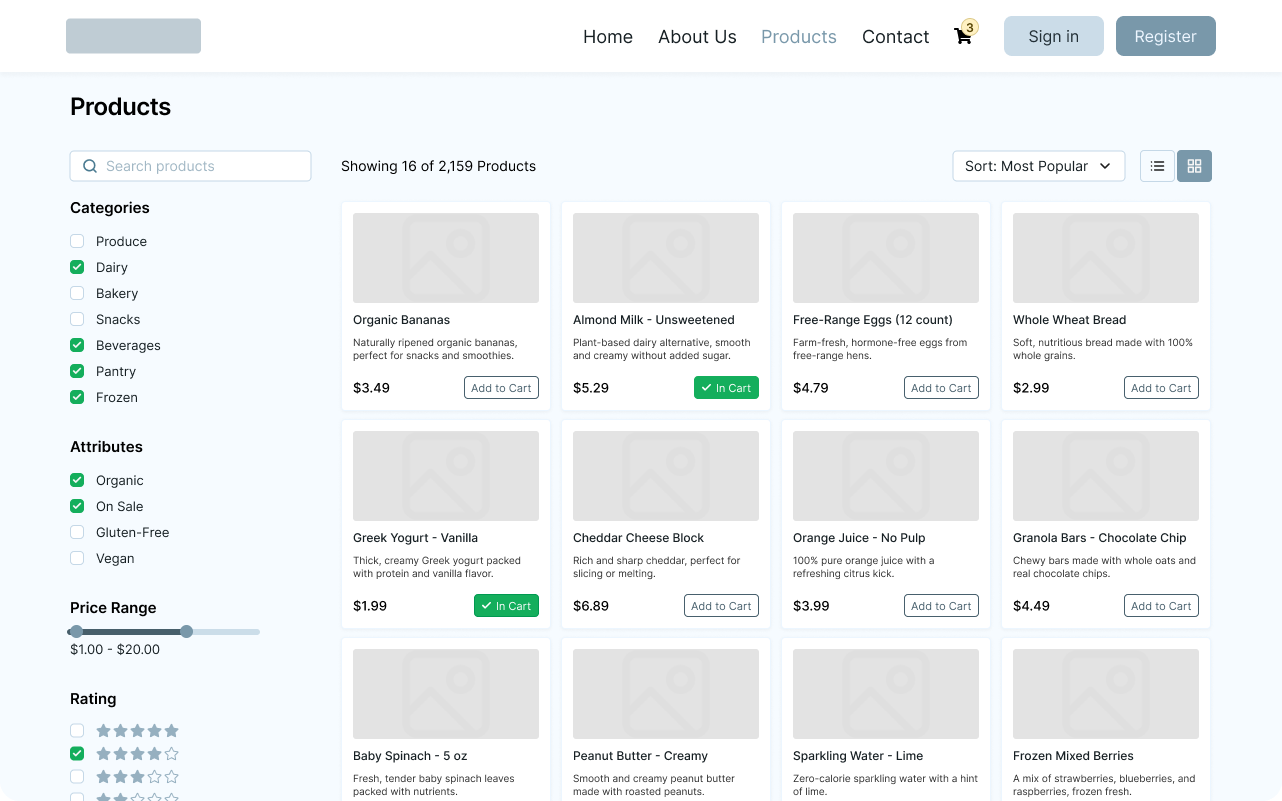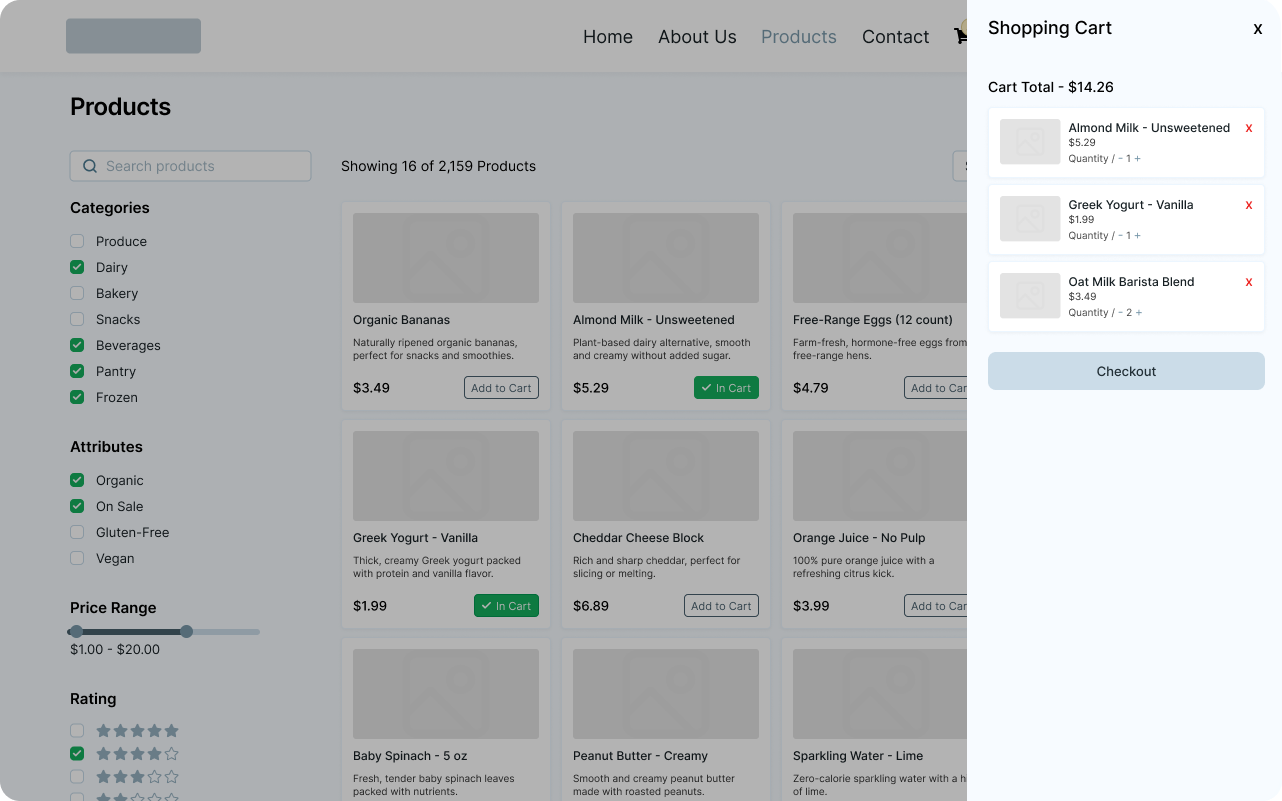Portfolio • Web Design & Development • 10-30-25
UX-Driven E-commerce Prototype
I developed a comprehensive e-commerce prototype using React and Redux, blending innovative design with robust functionality to showcase user-centric online retail

Project Overview
As a personal project, I aimed to create a comprehensive e-commerce platform that showcased my skills in UX design and front-end development. Without the constraints of a client brief, I had the freedom to focus on delivering an exceptional user experience while exploring innovative design and technical solutions.
This project is a comprehensive e-commerce prototype meticulously built from the ground up. Leveraging React for the user interface and Redux for state management, I engineered a visually engaging and fully functional online store. Every aspect was designed to prioritize intuitive navigation and a seamless shopping journey for the end user, showcasing how a sophisticated front-end architecture can power a dynamic retail environment. The prototype includes essential e-commerce functionalities, such as product Browse, detailed product views, cart management, and a streamlined checkout process.
Challenges
A key challenge in this project was designing and implementing a scalable and predictable state management system using Redux, capable of handling the complexities of an e-commerce application (e.g., dynamic product data, real time cart updates, user authentication). Ensuring smooth data flow and preventing common Redux pitfalls while maintaining application performance was a primary focus.
Another significant hurdle involved crafting a visually appealing and highly responsive user interface that adapted flawlessly across various devices. This included managing complex product grids, image carousels, and interactive elements, all while maintaining a cohesive brand aesthetic and ensuring a fluid user experience from Browse to checkout.
Process
My process began with an intensive UX design phase in Figma. I meticulously mapped out user flows for the entire shopping journey, from product discovery to final purchase. This involved creating wireframes and high-fidelity prototypes, focusing on clear product presentation, intuitive navigation, and a frictionless checkout process. Iterative design cycles helped refine the user experience based on best practices for e-commerce.
For development, I adopted a component-driven approach with React. Each part of the store, from individual product cards to the shopping cart, was built as a reusable React component, promoting modularity and maintainability. Redux was integrated to manage the application's global state, ensuring data consistency across all components. I used SCSS for sophisticated styling and theming, complementing Bootstrap's responsive grid system to guarantee a visually appealing and adaptive design on all devices.
Tech Decisions
The decision to pair React with Redux was central to this project's architecture. React provided the declarative UI layer, enabling the creation of dynamic and interactive components essential for an e-commerce platform. Redux was chosen for its centralized state management capabilities, which proved invaluable for managing complex data like product inventories, user carts, and order statuses predictably and debuggably.
Bootstrap was used as a foundational CSS framework to rapidly establish a robust and responsive layout, while SCSS allowed for deep customization and thematic styling, ensuring the prototype possessed a unique and modern aesthetic. This combination of powerful frontend libraries and custom styling ensured both development efficiency and a high degree of visual polish, showcasing an understanding of building scalable and maintainable client-side applications.
Key Takeaways
This project was a deep dive into the intricacies of building robust, state managed applications with React and Redux. It significantly enhanced my proficiency in managing complex application states, handling asynchronous data flows typical in e-commerce, and structuring large scale frontend applications for scalability and maintainability.
Beyond technical skills, I gained critical insights into optimizing the user experience within a commercial context. This included understanding how subtle design choices and efficient interactions can directly impact conversion rates and user satisfaction in an online store. The prototype stands as a testament to my ability to not only develop functionally rich applications but also to design intuitive and visually engaging digital products that prioritize the end-user's journey.
Quick Details
- Year 2024
- Industry eCommerce
- Role UX Engineer
- Category Web Design & Development
- Platform Web
- Duration About 2 weeks
Technologies Used
Color Palette
Each color was selected to support accessibility, visual hierarchy, and a clean, modern interface.

